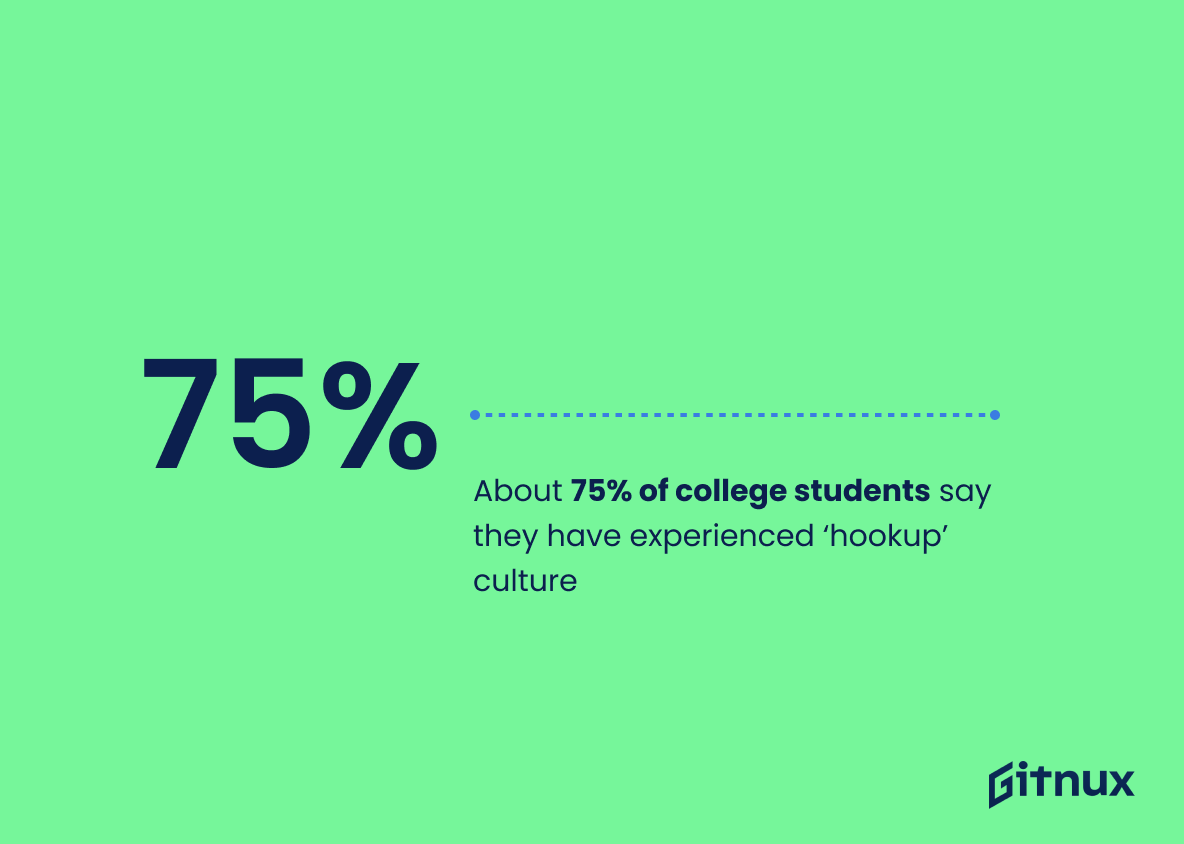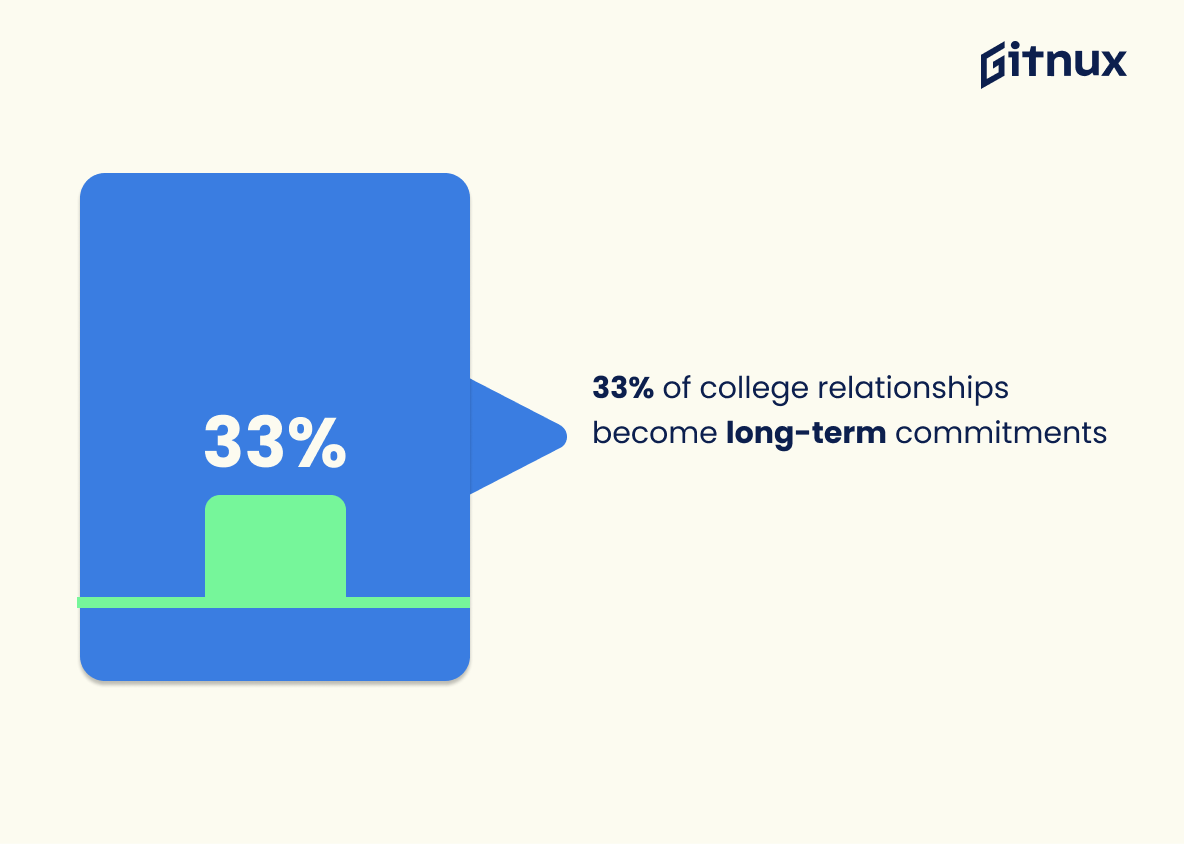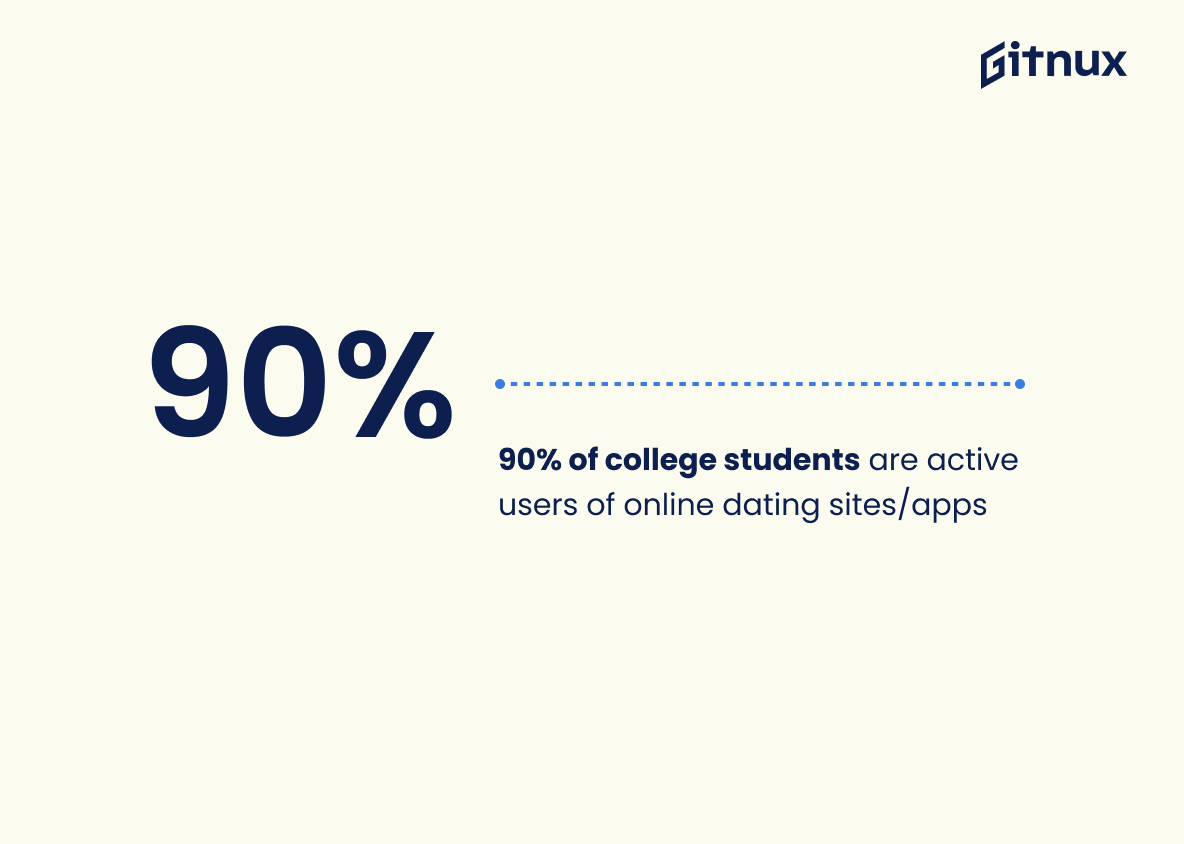College relationships are an important part of the college experience, and it’s interesting to see how they have evolved over time. In this blog post, we will be exploring some statistics about college relationships that provide insight into their prevalence and dynamics. From “friend with benefits” arrangements to interracial couples, these stats offer a glimpse into the changing landscape of modern romance on campus. We’ll also look at data related to dating violence, long-distance relationships, cohabitation trends and more. So let’s dive in.
This statistic is significant in the context of college relationships statistics because it reveals that a large portion of college students have experienced a “friend with benefits” relationship. This indicates that this type of relationship is a common occurrence among college students, and it is important to consider when discussing college relationships.
15% of college couples date before moving in together, Source: Ohio State University,
This statistic is significant in the context of college relationships statistics as it provides insight into the changing dynamics of college relationships. It suggests that more college couples are opting to date before taking the plunge and moving in together, which could be indicative of a shift in attitudes towards commitment and relationships.
College Relationships Statistics Overview
Over 49% of college students reported having encountered some form of dating violence, Source: The National Institute of Justice,
This statistic is a stark reminder of the prevalence of dating violence among college students. It highlights the need for greater awareness and education on the issue, as well as the need for more resources to help those affected by it. It is a call to action for college administrators, faculty, and students alike to take a stand against dating violence and create a safe and supportive environment for all.
Nearly 1 in 3 college relationships involve cohabitation, Source: Cornell University,
This statistic is a telling indication of the changing dynamics of college relationships. It shows that cohabitation is becoming increasingly common among college students, suggesting that college relationships are becoming more serious and long-term. This could have implications for the way college relationships are viewed and the expectations that come with them.
About 75% of college students say they have experienced ‘hookup’ culture, Source: American Psychological Association,
This statistic is a telling indication of the prevalence of ‘hookup’ culture among college students. It serves as a reminder that college relationships are often characterized by casual encounters, rather than long-term commitments. This statistic is important to consider when discussing college relationships, as it provides insight into the current state of college dating.
33% of college relationships become long-term commitments, Source: Harvard University,
This statistic is significant in the context of a blog post about College Relationships Statistics because it provides insight into the potential longevity of college relationships. It suggests that, while college relationships may not always last, there is still a chance that they could become long-term commitments. This statistic can be used to encourage college students to take their relationships seriously and to invest in them, as there is a chance that they could become something more.
Approximately 60% of college students have a significant other at some point during their college careers, Source: Penn State,
This statistic is a telling indication of the prevalence of college relationships. It shows that the majority of college students have experienced being in a relationship while in college, making it a common part of the college experience. This statistic is important to consider when discussing college relationships, as it provides insight into the prevalence of such relationships.
About 35% of women in college have experienced some form of sexual assault, Source: National Sexual Violence Resource Center,
This statistic is a stark reminder of the prevalence of sexual assault on college campuses, and serves as a call to action for college administrators, faculty, and students to take steps to ensure the safety of all students. It is a reminder that college relationships should be based on mutual respect and consent, and that any form of sexual assault should not be tolerated.
About 46% of college relationships involve an imbalance in partner’s drinking habits, Source: American Psychological Association,
This statistic is a stark reminder of the prevalence of alcohol-related issues in college relationships. It highlights the need for greater awareness and education about the potential risks of drinking in relationships, and the importance of open communication between partners.
90% of college students are active users of online dating sites/apps, Source: Stanford University,
This statistic is a telling indication of the changing landscape of college relationships. It suggests that online dating has become a popular way for college students to meet potential partners, indicating a shift away from traditional methods of courtship. This statistic is a valuable insight into the current state of college relationships and provides an interesting perspective on the changing dynamics of college life.
More than 30% of college relationships start in friend groups, Source: Huffington Post,
This statistic is significant in the context of college relationships statistics because it highlights the importance of friendship in the formation of romantic relationships. It suggests that many college relationships are based on a strong foundation of friendship, which can be beneficial for the longevity of the relationship.
Approximately 1 in 4 women have experienced some form of stalking in college, Source: The National Institute of Justice,
This statistic is a stark reminder of the prevalence of stalking in college, highlighting the need for increased awareness and prevention of this issue. It is a sobering reminder that college relationships can be fraught with danger, and that students should be aware of the risks associated with them. It is also a call to action for college administrators to take steps to ensure the safety of their students and to provide resources for those who have been victims of stalking.
Around 56% of college couples become exclusive after a month of dating, Source: USA Today College,
This statistic is a telling indication of the commitment levels of college couples. It shows that the majority of college couples are willing to take their relationship to the next level after only a month of dating. This speaks to the importance of relationships in college and the desire of college students to find meaningful connections.
Approximately 66% of college couples have been negatively impacted by social media, Source: University of Missouri,
This statistic is a stark reminder of the potential pitfalls of social media in college relationships. It highlights the fact that, despite the many benefits of technology, it can also be a source of tension and disruption in relationships. It serves as a warning to college couples to be mindful of how they use social media and to be aware of the potential consequences of their online behavior.
Conclusion
College relationships are complex and varied, with many different factors influencing the success of a relationship. The statistics presented in this blog post demonstrate that college students have diverse experiences when it comes to dating and relationships. From “friend with benefits” arrangements to long-distance partnerships, there is no one-size-fits all approach for college couples. Additionally, these stats show that social media can be both beneficial and detrimental to romantic connections while also highlighting the prevalence of interracial couples on campus. Ultimately, understanding how common certain types of relationships are among college students can help us better understand our own experiences as well as those around us.
References
0. – https://www.nij.gov
1. – https://www.nsvrc.org
2. – https://www.scholar.harvard.edu
3. – https://www.apa.org
4. – https://www.semanticscholar.org
5. – https://www.psyarxiv.com
6. – https://www.usatoday.com
7. – https://www.ktrs.com
8. – https://www.huffpost.com
9. – https://www.ncjrs.gov
10. – https://www.ncbi.nlm.nih.gov
11. – https://www.link.springer.com
12. – https://www.web.stanford.edu












